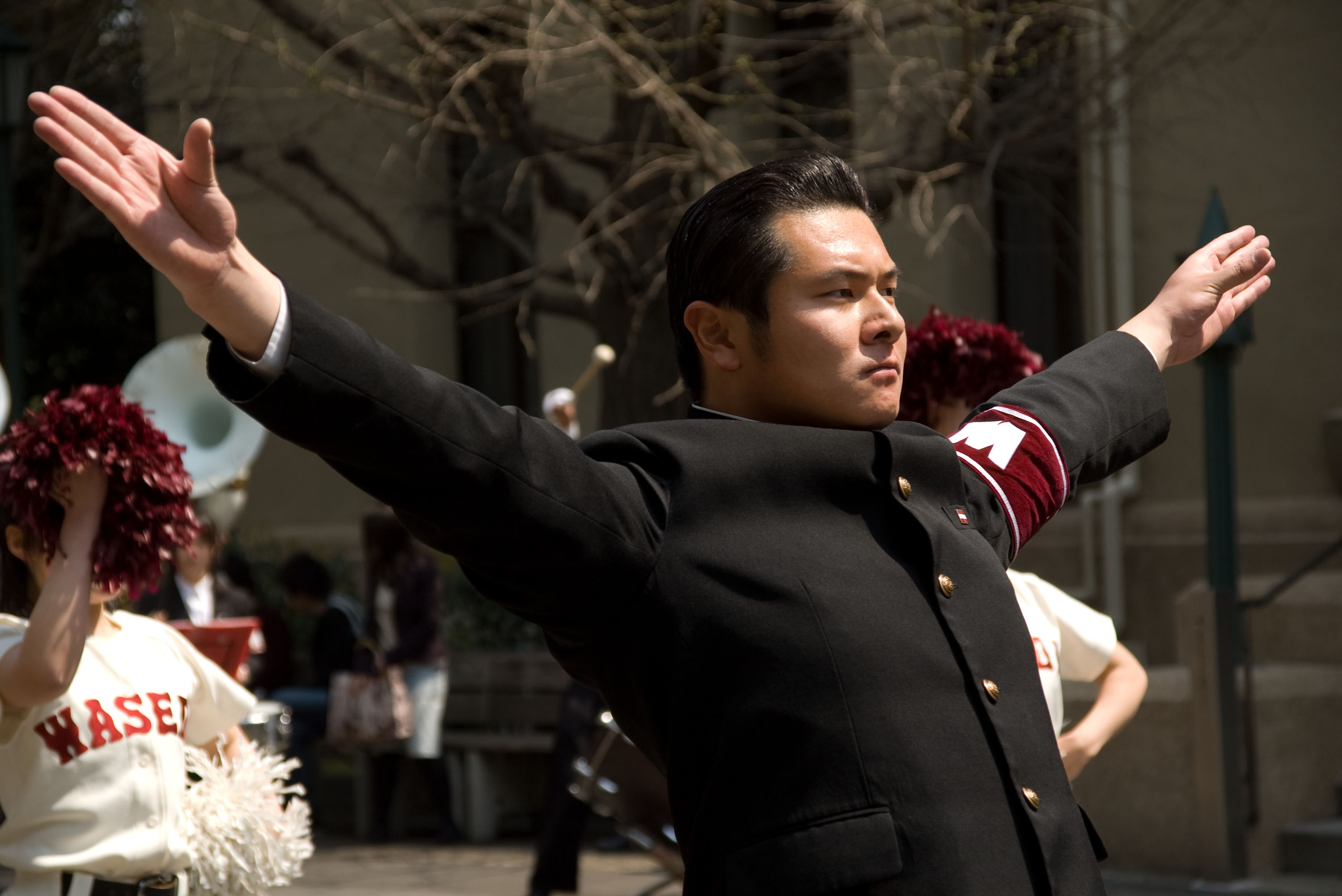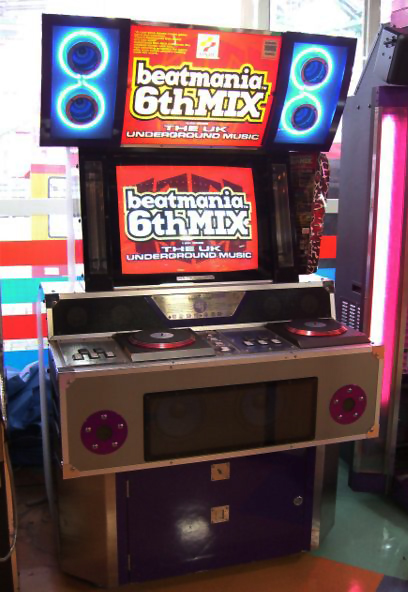|
Osu!
''Osu!'' (stylized as ''osu!'') is a freeware rhythm game originally created and self-published by Australian developer Dean Herbert. It was released for Microsoft Windows on 16 September 2007, with later ports to macOS, Linux, Android (operating system), Android and iOS. ''Osu!''s gameplay, based on the ''Osu! Tatakae! Ouendan (series), Osu! Tatakae! Ouendan'' series of rhythm games, primarily involves clicking notes, which appear as circles, using the Cursor (user interface), cursor. Since the game's release, three other game modes have been added, taking inspiration from ''Taiko no Tatsujin'' and ''Beatmania''. Unlike many rhythm games, levels in ''osu!'' are created and uploaded by users, increasing the range and volume of the song library, which is a factor contributing to the game's popularity. The game has a significant connection to Japanese culture and Anime song, anime music. It has also had effects on the Esports, esports industry—professional gamers use ''Osu! ... [...More Info...] [...Related Items...] OR: [Wikipedia] [Google] [Baidu] |
Osu! Tatakae! Ouendan (series)
The ''Osu! Tatakae! Ouendan'' series was developed by iNiS Corporation exclusively for the Nintendo DS system and published by Nintendo. It consists of the Japan-exclusive ''Osu! Tatakae! Ouendan'' duology and its international counterpart, ''Elite Beat Agents'', which contains the same gameplay but had its characters and themes adapted to fit a Western audience. Overview In all three games, players take control of a small 3-person team of skilled dancers who use the power of song and dance to aid people who specifically call for their help in overcoming their problems by raising their morale. The team the player controls, which is an ōendan in the ''Ouendan'' duology or a squad of special agents in ''Elite Beat Agents'', always consists of a lead dancer flanked by two backup dancers. Each mission is divided into multiple phases (typically four) and involves the dance team performing cool moves to the beat and rhythm of a particular song, which must be done successfully by perfor ... [...More Info...] [...Related Items...] OR: [Wikipedia] [Google] [Baidu] |
Osu! Tatakae! Ouendan
or ''Ouendan'', is a rhythm video game developed by iNiS and published by Nintendo for the Nintendo DS handheld game console in 2005, for release only in Japan. ''Ouendan'' stars a cheer squad rhythmically cheering for various troubled people, presented in-game in the style of a manga comic. In each stage, players use the DS touchscreen to tap specifically marked spots that appear in rhythm to various Japanese pop songs, scoring points for accurate timing and avoiding a poor performance which can cause the stage to end prematurely. Though never released in Western markets, it was a popular import to these regions, leading to the development of the Westernized '' Elite Beat Agents'', as well as a Japan-only sequel '' Moero! Nekketsu Rhythm Damashii Osu! Tatakae! Ouendan 2''. Gameplay Each level of ''Ouendan'' features a plot line accompanied by a specific song. A character (or characters) facing a problem will cry when their conflict reaches a climax. This call summons the ch ... [...More Info...] [...Related Items...] OR: [Wikipedia] [Google] [Baidu] |
Elite Beat Agents
''Elite Beat Agents'' is a rhythm video game developed by iNiS and published by Nintendo for the Nintendo DS. It was released in North America, Europe and South Korea. As the second of three rhythm games developed by iNiS specifically for the DS, it is the follow-up and international counterpart to '' Osu! Tatakae! Ouendan'', a Japanese rhythm game released in 2005, sharing many common elements with it. Similar to ''Ouendan'', the player taps and drags on indicated locations on the touch screen of the DS in time to the rhythm of the music to score points, while the upper screen shows comic-style scenes of the fictional "Elite Beat Agents" cheering on others in tough situations through their dance moves. The improvements made in this game were implemented in the Japanese game's sequel, '' Moero! Nekketsu Rhythm Damashii Osu! Tatakae! Ouendan 2''. ''Elite Beat Agents'' was released under Nintendo's Touch! Generations label in North America, which markets games to audiences outsi ... [...More Info...] [...Related Items...] OR: [Wikipedia] [Google] [Baidu] |
Rhythm Game
Rhythm game or rhythm action is a genre of music-themed action video game that challenges a player's sense of rhythm. Games in the genre typically focus on dance or the simulated performance of musical instruments, and require players to press buttons in a dictated sequence in time with music. Many rhythm games include multiplayer modes in which players compete for the highest score or cooperate as a simulated musical ensemble. Rhythm games often feature novel game controllers shaped like musical instruments such as guitars and drums to match notes while playing songs. Certain dance-based games require the player to physically dance on a mat, with pressure-sensitive pads acting as the input device. The 1996 title '' PaRappa the Rapper'' has been deemed the first influential rhythm game, whose basic template formed the core of subsequent games in the genre. In 1997, Konami's '' Beatmania'' sparked an emergent market for rhythm games in Japan. The company's music division, Bema ... [...More Info...] [...Related Items...] OR: [Wikipedia] [Google] [Baidu] |
Jeuxvideo
JV (from ''jeux vidéo''; ; ), whose name is Jeuxvideo.com from 1997 to 2021, also called JVC, is a French website, and also available as an application, specializing in video game since 1997. It is built as an information tool intended for players by a team of editors and notably offers news, files, video game tests and video presentations. Editors travel to major global events, such as E3, Tokyo Game Show, Gamescom, Paris Games Week or IDEF to meet development teams and follow games throughout their life cycle, from development to commercialization. Jeuxvideo.com is the most popular French-speaking video game news site. The site's attendance record dates from E3 2013, on June 11, 2013, with a peak of 33 million visits to its pages. History The website traces its history to a video game hint collection on Minitel, a precursor to the World Wide Web, and was founded by Sébastien Pissavy while on military service in 1995. As his work became more popular, he moved it to a web ... [...More Info...] [...Related Items...] OR: [Wikipedia] [Google] [Baidu] |
Beatmania
(styled as ''beatmania'') is a rhythm video game developed and distributed by Japanese game developer Konami and first released in December 1997. It contributed largely to the boom of music games in 1998, and the series expanded not only with arcade sequels, but also moved to home consoles and other portable devices, achieving a million unit sales. The Bemani line of music games from Konami is named after the series, was first adopted in the arcade release of ''Beatmania 3rdMix'' and kept ever since. The series came to an end with the last game being ''Beatmania The Final'', released in 2002. ''Beatmania'' gave birth to several spinoffs, such as the '' Beatmania IIDX'' series (a more advanced version featuring 7 keys and higher difficulty levels, and to this day still receiving new version updates) and the other being '' Beatmania III'', a remake of the 5-key series which featured a more modern hardware platform, a pedal for optional effects and a 3.5" floppy disk drive ... [...More Info...] [...Related Items...] OR: [Wikipedia] [Google] [Baidu] |
Level (video Games)
In Video game, video games, a level (also referred to as a map, mission, stage, course, or round in some older games) is any space available to the player during the course of completion of an objective. Video game levels generally have progressively increasing difficulty to appeal to players with different skill levels. Each level may present new concepts and challenges to keep a player's interest high to play for a long time. In games with linear progression, levels are areas of a larger world, such as Green Hill Zone. Games may also feature interconnected levels, representing locations. Although the challenge in a game is often to defeat some sort of character, levels are sometimes designed with a movement challenge, such as a jumping puzzle, a form of obstacle course. Players must judge the distance between platforms or ledges and safely jump between them to reach the next area. These puzzles can slow the momentum down for players of fast action games; the first ''Half-Life ... [...More Info...] [...Related Items...] OR: [Wikipedia] [Google] [Baidu] |
Single-player Video Game
A single-player video game is a video game where input from only one player is expected throughout the gameplay. Video games in general can feature several game modes, including single-player modes designed to be played by a single player in addition to multi-player modes. Most modern console games, PC games and arcade games are designed so that they can be played by a single player; although many of these games have modes that allow two or more players to play (not necessarily simultaneously), very few actually require more than one player for the game to be played. The '' Unreal Tournament'' series is one example of such. History The earliest video games, such as '' Tennis for Two'' (1958), '' Spacewar!'' (1962), and '' Pong'' (1972), were symmetrical games designed to be played by two players. Single-player games gained popularity only after this, with early titles such as '' Speed Race'' (1974) and ''Space Invaders'' (1978). The reason for this, according to Raph Koste ... [...More Info...] [...Related Items...] OR: [Wikipedia] [Google] [Baidu] |
Nintendo DS
The is a foldable handheld game console produced by Nintendo, released globally across 2004 and 2005. The DS, an initialism for "Developers' System" or "Dual Screen", introduced distinctive new features to handheld games: two LCD screens working in tandem (the bottom of which is a touchscreen), a built-in microphone, and support for wireless network, wireless connectivity. Both screens are encompassed within a clamshell design similar to the Game Boy Advance SP. The Nintendo DS also features the ability for multiple DS consoles to directly interact with each other over Wi-Fi within a short range without the need to connect to an existing wireless network. Alternatively, they could interact online using the now-defunct Nintendo Wi-Fi Connection service. Its main competitor was Sony Interactive Entertainment, Sony's PlayStation Portable during the seventh generation of video game consoles. Prior to its release, the Nintendo DS was marketed as an experimental "third pillar" in Nin ... [...More Info...] [...Related Items...] OR: [Wikipedia] [Google] [Baidu] |




